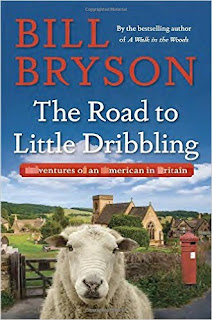Too Short for a Blog Post, Too Long for a Tweet LXVII
 Here's an excerpt from a book I recently read, "The Road to Little Dribbling: Adventures of an American in Britain," by Bill Bryson:
Here's an excerpt from a book I recently read, "The Road to Little Dribbling: Adventures of an American in Britain," by Bill Bryson:The one charge against the green belt that has some foundation is that it keeps a lot of land off the market. Yes, it does. That is actually the idea of it. But that land isn’t sitting there doing nothing. It shelters wildlife, transpires oxygen, sequesters carbon and pollutants, grows food, provides quiet lanes for cycling and footpaths for walking, adds grace and tranquillity to the landscape. It is already under enormous pressure. Fifty thousand houses have been built on green-belt land in the last ten years. Sussex alone lost thirteen ancient woodlands to development in the same period, according to the Woodland Trust. We ought to be appalled to see this happening, not clamoring for more of it.
Southeast England is
already as densely populated as the Netherlands, yet thanks to the
softening influence of the green belt large expanses of it remain
verdant and attractive and seemingly timeless—the England that most of
us appreciate and love. There is absolutely no need to throw that away.
Comments